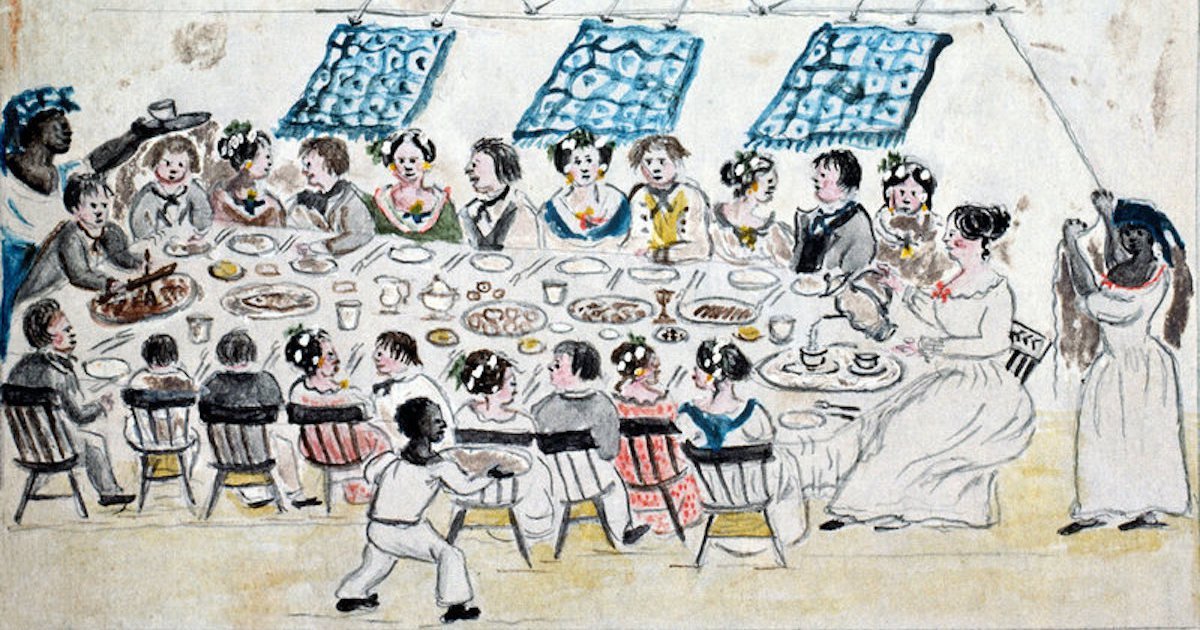[ad_1]
NN THE MID 19TH CENTURY, slaves throughout the American South pulled at ropes and chains nonstop during summer mealtimes, to make plantation dining rooms bearable in beastly humid heat. The slaves would swing wooden panels or fringed fabric rectangles that were mounted on the dining room ceilings. The arduous labor created breezes and flicked insects away from the food and the guests’ flesh. The fans were called punkahs—the same name was applied to their counterparts in India, which servants waved above British colonists.
For American slaveholders, assigning people (usually boys and men dressed in brown and red livery) to work the punkah cords during parties was a way to flaunt wealth. Dana E. Byrd, a Bowdoin College scholar who has studied plantation life, said that the public display “would have undoubtedly been regarded as an extravagant use of labor.” She also notes that there were some benefits to the work. The fanners could listen to party conversations, which sometimes revealed useful or important news, about owners who might soon auction their enslaved families, abolitionists growing active in the region, and slaves managing to revolt or escape.
[ad_2]
Source link

